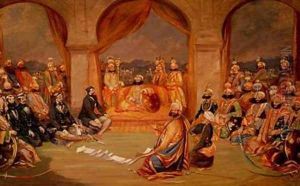Frederick Christian Jnr Lewis Paintings
Frederick Christian Lewis Jr., often known as Frederick Christian Lewis the Younger, was a British painter and engraver born in the year 1813. He was part of a family with a strong artistic tradition; his father, Frederick Christian Lewis Sr., was an engraver and landscape painter, and his brother, John Frederick Lewis, became a well-known Orientalist painter.
Lewis Jr. received his artistic training primarily from his father and was exposed to the art world from an early age. His father's connections and reputation in the art community provided him with opportunities to learn and develop his skills in various mediums, including watercolor and engraving. Despite living in the shadow of his father's success and his brother's fame, Lewis Jr. managed to establish his own identity in the art world.
Throughout his career, Lewis Jr. worked on both original compositions and engravings after other artists' works. He was known for his skill in the latter, which required a keen eye for detail and a steady hand. His engravings helped disseminate the works of contemporary painters to a wider audience, as they were often reproduced in books, periodicals, and as standalone prints.
Lewis Jr.'s own artistic works were less documented than those of his brother, and as such, his personal style and contributions to the art world are less well-known. However, it is clear that he was a competent artist in his own right, with a proficiency in both watercolors and engravings. His death in 1875 marked the end of a modest but respectable career in the British art scene of the 19th century.
Though not as celebrated as other artists of his time, Lewis Jr.'s work remains a testament to the skill and craftsmanship of engravers during the Victorian era. His legacy continues in the collections of those who appreciate the fine details and dedication to the reproduction of great works of art that engravers like Lewis Jr. brought to the public.
